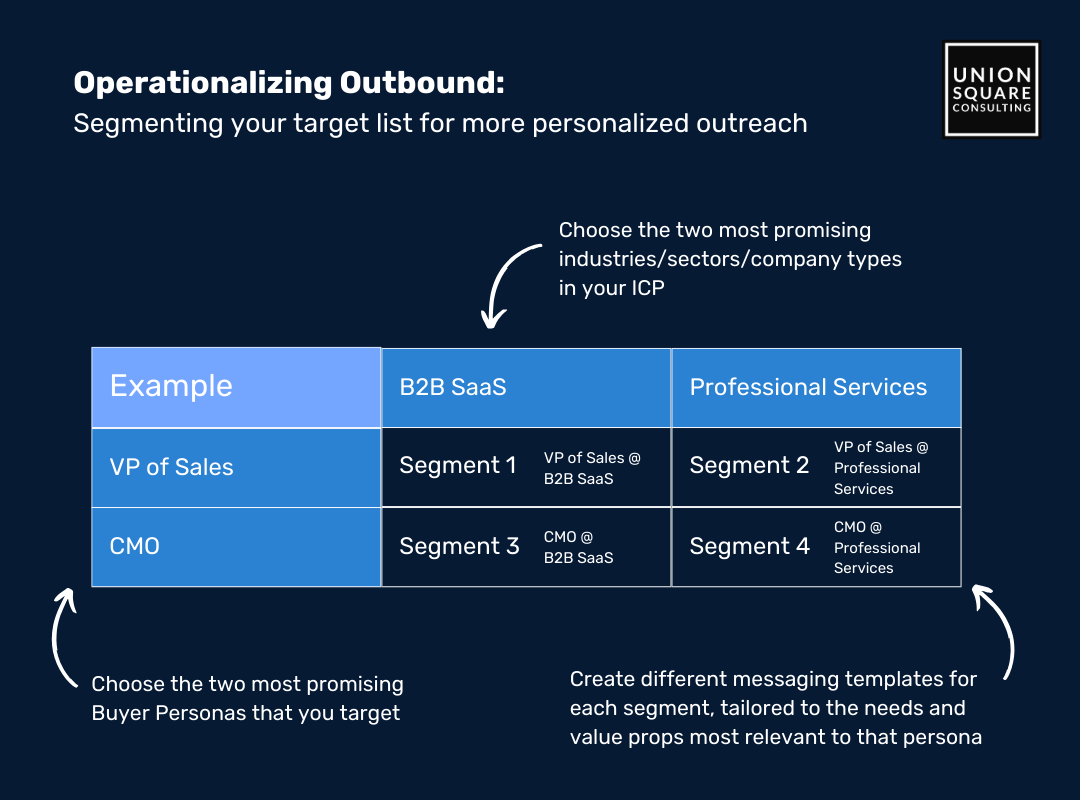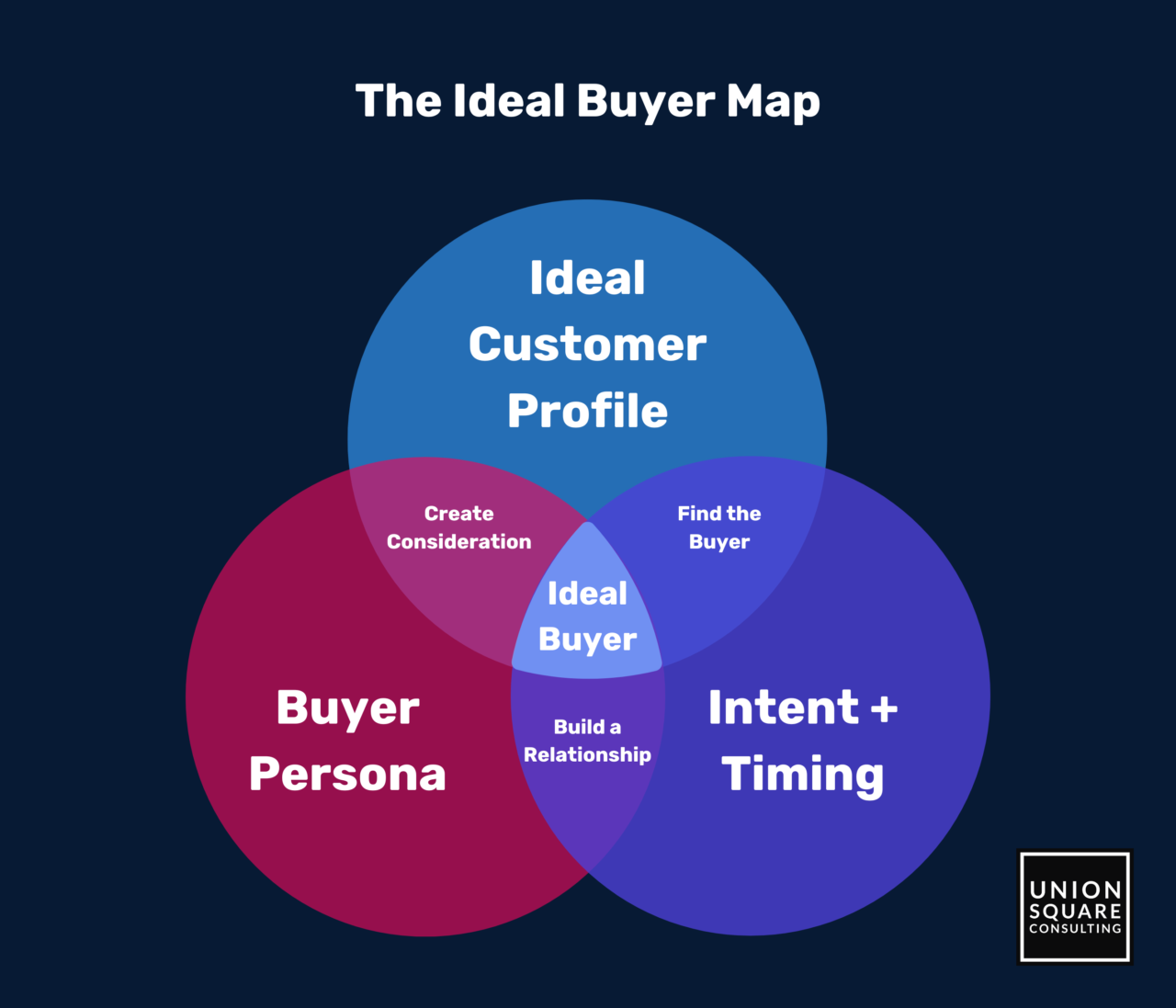The Modern Outbound Framework
Read time: 9 minutesDownload the Full Guide to Modern Outbound PDF Here!
Recent research shows it can take 1,000 to 1,400 activities to create a single opportunity from B2B outbound activity in 2024. It’s easy to understand why so many people are saying “Outbound is Dead!” With funding tight and audiences increasingly apathetic to cold outreach, B2B SaaS companies can no longer afford to acquire customers this way.
That is, unless they adopt a new playbook for modern outbound.
The steady decline of outbound is a quality problem, not a market problem. It’s time to do a reset. It’s time to narrow our focus and operationalize our outbound process so that we’re only prospecting best-fit accounts with the best possible messaging.
The result: higher reply rates, more pipeline generation, shorter sales cycles, and bigger deals.
This is how we do it.
Capacity Planning
We’re often asked “How many activities should an SDR log in a day?”
A very rough rule of thumb is that an SDR can likely contact 40-50 prospects in a day with relevant and semi-personalized messaging. The number of activities could be 2X this number if they’re calling and then sending an email immediately after.
This might work for your organization but we encourage sales teams to go deeper. How long does it take to log a call and/or write an email for YOUR SDRs? How much research do they need to do to make that call effective? If you sit down with an SDR for an hour and watch them go through the process without skipping any steps, logging high quality activity, how long does it take for each activity?
This gives us a more accurate picture. Then we need to identify how many activities we plan to log per contact before giving up and how many contacts we want to prospect per account.
This gives us the total number of accounts an SDR can handle effectively. We can run the same exercise for AEs and arrive at a number of total accounts for the sales team over a given time
Learn more about Capacity Planning here.
Building Your Account List
Once we know our capacity (A.K.A, the number of target accounts we want to prospect), we need to identify the absolute best accounts that fit into that number. We do this by creating an Account Score with the data we have available.
The first step is identifying our ICP as narrowly as possible. This means looking at firmographic data like; industry sector, geography, ARR, headcount, revenue and/or headcount growth, funding, etc. We can also look at technographic data – the tools they’re currently using. It’s important to go deep here. As we narrow down, do we have enough accounts to feed every rep? If so, we can go further.
With an Account Score we can look at all of that data – alongside any third-party intent data and/or past sales and marketing engagement data if we have it – and assign a score to various things that indicate a top prospect. This is far from a perfect science. It’s important to start somewhere and iterate.
Once we have this score in place, we can stack rank our prospect accounts into Tier 1, Tier 2, and Tier 3 buckets. Then, we’ll fill out the contacts and the intel we need to prospect them.
The next step is segmentation. Each segment can contain one industry or type of company and one Buyer Persona. This allows our reps to work one specific type of prospect at a time with similar messaging. For bonus points we could break these into separate segments for Tier 1s and Tier 2s & 3s, so that reps can spend more time on their Tier 1s and move through the bottom tiers faster.
Learn more about building your list here.
Creating Your Sequences
Now that we have a tight target list broken into clear segments, our reps are almost ready to start prospecting. They should have the ability to start on one segment with similar messaging and work through that list efficiently while sharing highly relevant and personalized content that converts.
The last piece here is to build sequences or cadences that enable them to do this as efficiently and effectively as possible.
To do this, we’re going to further break our segments out by tier. If you have four account segments, now you’ll have eight: your Tier 1 segments and your Tier 2 and 3 segments.
This makes it easier to plan our sequences not only around relevant content, but around optimal personalization as well. Following the Tailored, Targeted, and Templated messaging methodology, here’s what that will look like.
Tailored: Our Tier 1 sequences will have a lot of blank message templates, encouraging our reps to research each prospect and personalize their outreach for these high-value accounts. However, we can also create templates they can pull in when they spot relevant trigger opportunities (more on that in Sales Triggers).
Targeted: For our Tier 2s and Tier 3s, we want to use more fleshed-out templates that are relevant for each specific segment. This will allow reps to save time by personalizing only the opening line, while still sending a relevant message.
Templated: 100% templated, generic messaging (A.K.A, Spray and Pray) has no place our optimized outbound playbook.
Lastly, we need to enrich our data to ensure that reps have 1-click access to every piece of intel they need to personalize their outreach. When they log into the sales engagement tool they should see links to the website, Salesforce contact, social media links. past sales and marketing engagement, and other intel that will help them craft compelling messaging.
Learn more about creating your sequences here.
Sales Triggers
Relevance always beats personalization. Your local newspaper will never be personalized to you, addressing you by name, but you’ll read it because the content is relevant to your life and your surroundings.
Sales triggers alert your reps to events or situations relevant to your target accounts which may indicate buying intent or a need for your offering. As an example, they may raise a round of funding and suddenly have budget and/or needs they didn’t have before.
There are tons of different triggers you can track for – the important thing is to find which triggers are the best signifiers of your company’s ideal buyer.
They can be things such as:
- A cyberattack
- Mergers and acquisitions
- Successful funding rounds
- Change in employee headcount
- Launch of a new product
- Internal promotions
- And many more
After we identify the triggers that best suit our ICP, we can create templates with messaging and value propositions specific to each trigger. Tools like Owler can track your top accounts for specific triggers of your choice, notifying your reps when a trigger event happens. Then, they can simply pull the appropriate trigger template into one of our blank Tier 1 sequence/cadence emails, sprinkle some personalization on top, and send it off.
Now your reps are able to send highly relevant and personalized outbound messages in a very short amount of time.
More on sales triggers to come!
Subscribe to our newsletter to get all of our new content delivered straight to you.
Reporting
We’ve outlined a pretty detailed operational plan for outbound. But without accurate measurement, we can’t have effective execution. Here’s a simple way to think about the reports and dashboards you need in order to monitor your outbound engine.
We want to start with the end in mind by measuring total closed won deals in both number and dollar amount. We then want to measure our total pipeline generated (in number and dollars), our average sales price, sales cycle length, and overall pipeline velocity from outbound. Lastly, we should track total initial meetings booked as well.
These reports should all be broken down by rep and by team (if you have multiple teams).
Whether you want to track total activities per rep/day or not is a hot debate. We feel the adobe numbers are what’s most important, so we encourage you to focus on the end results you want to achieve.
That said, we recommend teams also look at total accounts worked and the personas within each account worked – especially the Tier 1s – to be sure that reps are giving their accounts the attention they need. We did capacity planning for a reason, so if these accounts are being neglected it needs to be addressed.
More on reporting to come!
Subscribe to our newsletter to get all of our new content delivered straight to you.
Sales Nurture Plays
Ideal buyers must always meet these three criteria:
- Right ICP
- Right buyer persona
- Right timing/buying intent
It’s rare, however, that outbound prospects meet all three of these requirements right away.
After setting up our outbound playbook, you should only be contacting prospects that meet at least two of these criteria. But what’s the play when you’re missing that final piece?
Our Ideal Buyer Map shows your reps the best strategy for each scenario.
Not the right ICP: Continue to build a relationship with your ideal buyer persona contact. This play is about the long game – and being top-of-mind whenever a new opportunity comes up for the buyer.
Not the right persona: Sales reps can’t spend too much time working a contact that has no buying authority. In this case, your rep needs to identify the “path to power” and work their way up. The key with this strategy is to maintain a relationship with your initial contact and not alienate them.
Not the right time: This play can go one of two ways. 1) If your prospect is stuck in another contract, RevOps should support the rep in nurturing the relationship with reminders and automated task assignments to stay top of mind until the contract is up. 2) If the prospect “isn’t interested”, it’s up to sales and marketing to create moments of consideration by identifying product value and mapping it to pain points.
More on sales nurturing to come!
Subscribe to our newsletter to get all of our new content delivered straight to you.
When you’re ready, here’s how we can help:
Get a Free 1:1 Revenue Efficiency Workshop
Get one of our Senior Revenue Strategists to yourself for 1 hour and leave with a plan to increase the money-making power of your go-to-market operations.
Hire Us!
Bring us on as your Strategic RevOps Team and realize the growth potential of your revenue engine. There are 3 ways to work with us.


